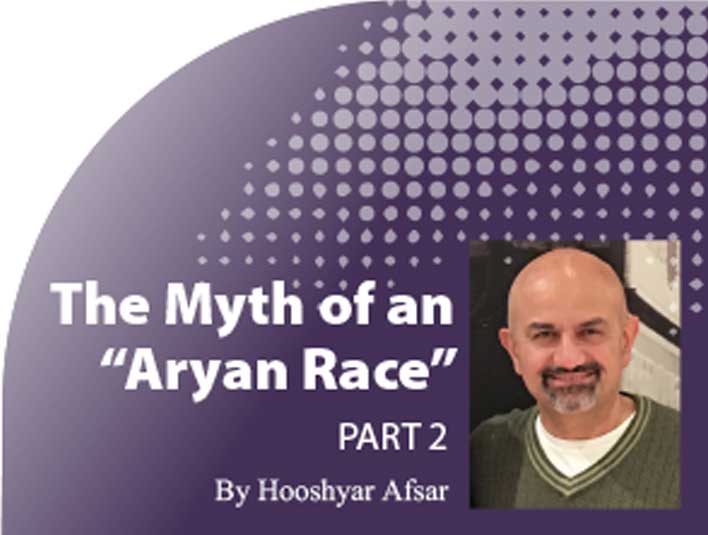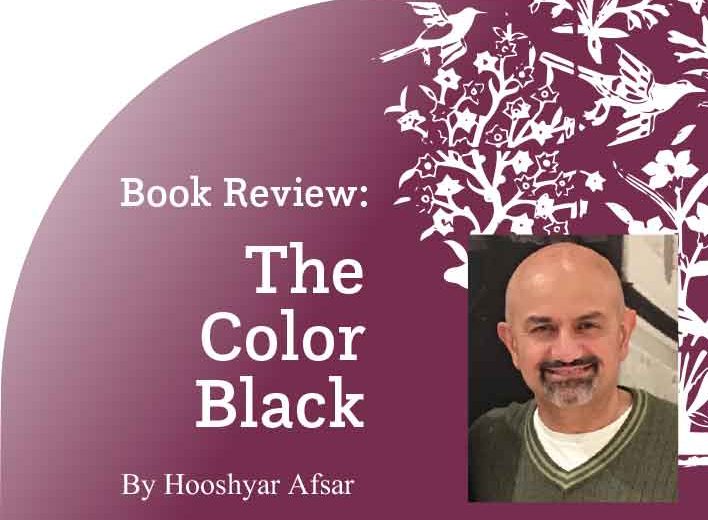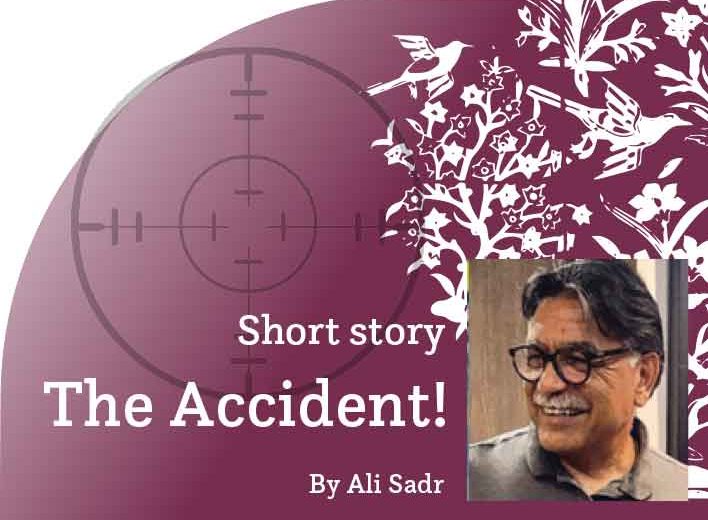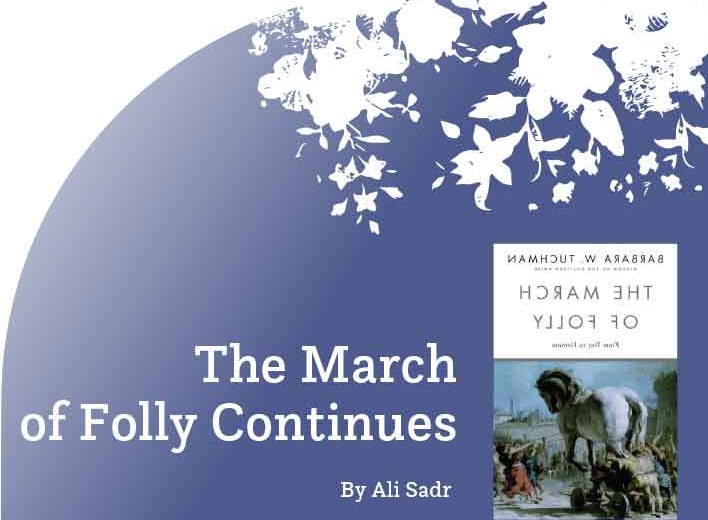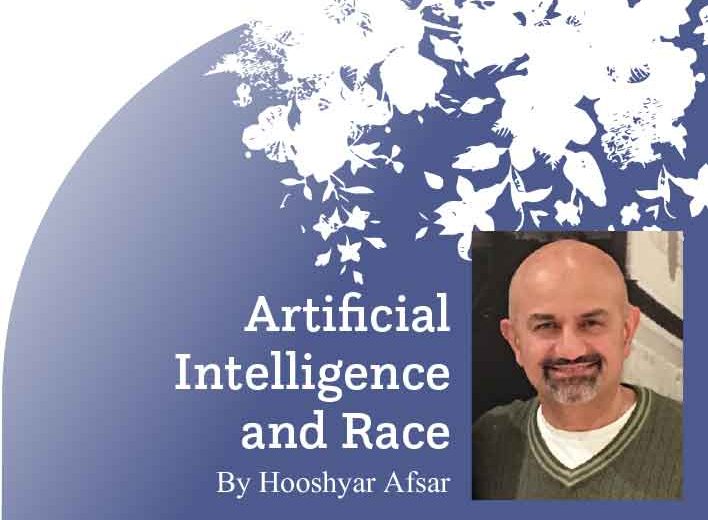The Myth of an “Aryan Race” Part 2
By Hooshyar Afsar
In the first part of this article, published in Peyk #205 (May-June 2023), we took a general look at “race” from historical and scientific viewpoints. In this second part, we will specifically analyze the historical roots of the terms “Aryans” and “Aryanism” in Europe and “Aryan race” in Iran.
Aryanism according to historians, linguists, and anthropologists
The term “Arya” means noble in both Sanskrit and Middle Persian or Pahlavi. [1] It has religious connotations in both Zoroastrianism (the dominant pre-Islam religion in Iran) and Hinduism in India; it is referred to multiple times in the holy books of Avesta and Rig Veda from both of those religions, respectively. [2] The term Aryan also appeared in ancient inscriptions at Naqsh-e Rostam (historical rock reliefs with inscriptions in Fars province, Iran) attributed to the Hachamanid and Sassanid dynasties. The inscriptions done at the time of Ardeshir I, founder of the Sassanid dynasty, were also the first historical references to the words Iran and Iranshahr. [3] The question is: when and in what context did the word Aryan first appear in European research?
The word Aryan was first used by Abraham Hyacinthe Anquetil-Duperron, French Orientalist and translator of Avesta to French in 1763. Anquetil-Duperron Europanized the term “Arya” (or “Ariya”) that he found in Avesta. [2] Yet the person who created a linguistic context for the term Aryan was Sir William Jones, the world-renowned philologist, linguist, and justice of the Bengal Supreme Court in Calcutta, India. Prior to his time in India, Jones was the first person who translated Persian grammar to English in 1771 and his later translation of works by Persian classical poets became an inspiration to poets like Byron and Shelly and to the German movement of romanticism. He had critical acclaim in eight languages and was fluent or knew many more. [4] Jones later moved to India to find legal remedies to the troubles of the East India Company and further the British influence. To understand the legal code in India, Jones had to learn and master Sanskrit, which he did with many hardships. After learning Sanskrit, Jones discovered significant similarities in grammar, words, and sentence structure among Sanskrit, English, Latin, German, and Persian, all of which he had mastered.
In 1786, Jones gave a historic lecture in Calcutta, stating a linguistic theory that there should be a single “mother tongue” to all these languages. He also came across the term “Arya” and a reference to “Aryan Invasion” in Rig Veda and used the term “Aryan” to refer to the “mother tongue.” Jones started the theory on where and by whom this “mother tongue” was spoken; he thought it was related to “Aryan Invasion” in Rig Veda. This was a purely linguistic endeavor and had no connection to the notion of “race,” yet what came in the next century mutated to a different movement. The aftermath of Jones’ theory in the nineteenth and twentieth centuries was so tragic that, while in the beginning decades of the nineteenth century the term “Indo European” was used interchangeably with the term “Aryan,” today the “mother tongue” is only referred to as “Proto Indo European” language by linguists and anthropologists. [5]
The romantic movement in nineteenth century Europe welcomed the notion of the Aryan language as the “mother tongue” with fervor. Searching for a sacred time when humans lived in harmony with nature and god, linguistics mutated to theories on Aryan ancestors. Artificial linking of a linguistic theory to European ancestry in search of unison with God and nature became a myth that had scientific beginnings. In his book Aryan Idols, Stefan Arvidson discusses the myth by quoting French historian and anthropologist Jean-Pierre Vernant, who calls this nineteenth century-scholarship a “web of scientific myths,” writing: “These myths were steeped in erudition, informed by profound knowledge in Hebrew and Sanskrit, fortified by comparative study in linguistic data, mythology, and religion, and shaped by the effort to relate linguistic structures, forms of thought, and features of civilization. Yet, they were also myths, fantasies of the social imagination, at every level.” [6]
This “Aryanism’’ of the nineteenth century, fused with the scientific racism resulting from a distorted conclusion of Darwin’s theory of “Natural Selection,” gave rise to the racist ideology of a superior “Aryan” race in Europe. Among the infamous thinkers of that time are French novelist, diplomat, and travel writer, Joseph Arthur de Gobineau, author of “An Essay on the Inequality of Human Races;” British-German Houston Stewart Chamberlain, author of “The Foundations of the Nineteenth Century;” and, finally, American Madison Grant, author of “The Passing of a Great Race.” These three are known as the primary inspirations for the German Nazi ideologue and theorist Alfred Rosenberg, author of The Myth of the Twentieth Century, who promoted the idea that the “Nordic Race’’ was the “master race.” Rosenberg devised his own hierarchy of humans, placing the “Aryan” race at the top of the “ladder,” with Blacks and Jews at the bottom. [7] Thus, the eighteenth-century linguistic theory of an “Aryan” mother tongue became the “Aryanism” of nineteenth-century Europe, ending with the Nazi superior “Aryan Race” ideology and perhaps the largest recorded human tragedy of all time in the twentieth century—fifty million dead by the end of World War II, including six million Jews during the Holocaust.
Now the question is how and when did European “Aryanism” and the racist ideology of the superior “Aryan Race” become an Iranian historical narrative with its Persianized identifier—the nezhād-e āriyāyi? For this, we need to look at the emergence of Iranian nationalism in the nineteenth and early twentieth centuries.
Covert political agendas and overt outcomes
Unlike the Ottoman Empire, which was geographically, politically, and militarily linked with Europe, Iran in the beginning of the nineteenth century, under the Qajar dynasty, had no serious or sustained relations with Europe. The Qajar court and Iranian elite were more concerned with their rival neighbors and did not see much need in having contacts with the “unclean infidels” of Europe. The Iranian elite suffered from arrogance and a sense of grandiosity that somehow deemed Europe of the nineteenth century as still entangled in the medieval ages. In his book, The Emergence of Iranian Nationalism, professor Reza Zia-Ebrahimi talks about two traumatic military defeats in the first half of the nineteenth century that shook up the Iranian psyche. The Iranian monarch, Fathali Shah Qajar, came head to head with Tsar Alexander I’s “determination to secure his empire’s southward expansion.” [8] Two multi-year military campaigns ended with the Gulistan (1813) and Turkmenchay (1828) treaties and a loss of significant territories in the Caucasus Mountains and present-day Armenia and Azerbaijan to Tsarist Russia, plus huge monetary reparations. In the aftermath of the two traumatic treaties, the Qajar court sought contact with Europe through sending its students to Europe with the simplistic mindset that European superiority was limited to military technology and strategy. [8] Regardless of the Qajar elite’s intentions, the contact ushered in a new generation of Iranian intellectuals who realized that European military superiority was one of the outcomes of centuries of social, political, and technological development. By the end of the nineteenth century, the arrogance and self-centered attitude of the Qajar elite was replaced with praise for European accomplishments and search for a common heritage. [9]
This new trend, seeking the restoration of the pre-Islam ”greatness” of the Persian empire and Iranian national unity, saw the Iranization of the “Aryan Race” theory as a pathway to its goals. The most prominent authors representing this trend were Mirza Agha Khan Kermani and Mirza Fath-Ali Akhundzadeh. It is important to point out first that, until the 1890s, “in the entire corpus of Iranian literature there is no trace of the today ubiquitous Aryan race (nezhād-e āriyāyi).” [9] Kermani was the first Iranian author to use the term “Aryan” in his books Seh maktub and Āʿineh-ye sekandari. Yet Kermani didn’t come up with the Persian version of the Aryan race, namely nezhād-e āriyāyi. Again, Professor Zia-Ebrahimi writes: “As there was simply no equivalent of Aryan in Persian at the time, Kermani had to resort to the European term. He wrote āriyān or āreyan, which are transliterations of French aryen. At the time, Iranian authors had not yet merged the European neologism with the Avestic and Old Persian term “ariya.” [9] Zia-Ebrahimi asserts that another author, namely Sadeq Rezazadeh Shafaq, “was the first Iranian author to translate the European term ‘Aryan’ into ‘āriyā’ (adj. āriyāyi), rather than merely transliterate it as ‘āriyān,’ like Kermani does. It is at this juncture, that the term ‘āriyā’ enters the modern Persian language.” [10]
Yet another author played a more influential role in propagating the Aryan race (nezhād-e āriyāyi) narrative in Iran. Hassan Pirniya, one of the intellectual statesmen of the latter years of the Qajar dynasty, studied abroad and held the post of prime minister during the reign of the last Qajar king. After Reza Shah founded the Pahlavi dynasty in 1925, Pirniya retired from politics and dedicated his time to writing his history books. His first history book, commissioned by the early Pahlavi state, included the chapter “Races–The White-Skinned Race–the Indo-European People,” which completely relied on “European racial classification of humankind.” [11] Pirniya subscribed to the idea of “Nordic Race’’ and claimed that the Scandinavian peninsula was the proto homeland of the “Aryans” and even assumed that Iranians had migrated from Scandinavia. These ideas had much in common with the ideas of Nazi ideologist Rosenberg mentioned earlier. Early Pahlavi-era school books copied Pirniya’s views on the Aryan race: “An early textbook simply puts it this way: ‘The people of Iran are part of the Aryan Race and their current language is Persian.’” [12] Constructing the Persian version of the “Aryan Race” (nezhād-e āriyāyi) narrative by Reza Shah’s educational and propaganda machines was not accidental. The founder of the Pahlavi dynasty sought this narrative as a way to restore the long lost grandeur of the Persian empire and seek a common heritage with Europeans. To that end, diversity of various nationalities and ethnic minorities—such as Kurds, Azaris, Turkmens, Balouchis, Arabs, and Lurs—was denied and promotion of their languages was prohibited. This idea went hand in hand with repression and persecution of opposition forces and denial of the democratic rights of the citizenry.
It is important to note that the legacy of the Pahlavi era is not free of contradictions. Reza Shah’s promotion of the “Aryan Race” narrative and his affinity for Nazi Germany [13] cost him his throne after the Allies’ military invasion of Iran in 1941, leaving an ongoing racist footprint in the current historical national narrative. The political repression under Reza Shah that continued during his son Mohamad Reza Shah’s rule denied Iranians their democratic rights and traumatized the society with political persecution, imprisonment, and torture. At the same time, substantial modern reforms in education, the judiciary, and social freedoms during Reza Shah, later augmented by land reform and women’s suffrage during his son’s reign, had a substantial positive impact on Iranian society. Many of these reforms that were implemented with the hard work of the Iranian intelligentsia became ingrained in Iranian society and could not be reversed even by the backward policies of the Islamic Republic. It is an unfortunate fact that the Islamic republic has added new elements of repression that did not exist before the 1979 revolution, namely gender apartheid and religious persecution among others.
Ending Remarks
Until the start of the Woman, Life, Freedom movement in September 2022, second-generation Iranians in the diaspora and their racial justice awareness were the main source of hope for someday debunking the “Aryan Race” (nezhād-e āriyāyi) idea and forever erasing it from the Iranian historical narrative. [14] Since the start of WLF, political, social, and global awareness of the young activists and leaders of the movement in and, for the most part, outside of Iran have given us a newly found hope. The leading role of progressive women in the movement; the starting and continuation of the movement by Kurdish and Baluchi people and the welcoming of their role by people all over Iran; an emphasis on gender equality, LBGTQ rights, national, ethnic, and religious minorities rights with an astounding emphasis on intersectionality [15]; and a push toward social, economic, and environmental justice all pave the way for a future free, democratic, and diverse Iran. There shall come a day that Iranians shall celebrate their own diversity as an equal member of the human community.
___________________________________________________
References and Notes
[1] https://iranicaonline.org/articles/arya-an-ethnic-epithet
[2] Zia-Ebrahimi, Reza. The Emergence of Iranian Nationalism: Race and the Politics of Dislocation. Columbia University Press, 2016, p. 149.
[3] https://iranicaonline.org/articles/eran-eransah
[4] Anthony, David W. The Horse, the Wheel, and Language: How Bronze-Age Riders from the Eurasian Steppes Shaped the Modern World. Princeton University Press, 2007.
[5] Zia-Ebrahimi, Reza. The Emergence of Iranian Nationalism: Race and the Politics of Dislocation. Columbia University Press, 2016, pp. 150-153.
[6] Arvidsson, Stefan. Aryan Idols: Indo-European Mythology as Ideology and Science. Translated by Sonia Wichmann. Chicago: University of Chicago Press, 2006, p 5.
[7] Jackson, John P., and Nadine M. Weidman. “The Origins of Scientific Racism.” The Journal of Blacks in Higher Education, no. 50 (2005): pp. 66-79. http://www.jstor.org/stable/25073379.
[8] Zia-Ebrahimi, Reza. The Emergence of Iranian Nationalism: Race and the Politics of Dislocation. Columbia University Press, 2016, pp. 19-21.
[9] Zia-Ebrahimi, Reza. The Emergence of Iranian Nationalism: Race and the Politics of Dislocation. Columbia University Press, 2016, Chapter 2.
[10] Zia-Ebrahimi, Reza. The Emergence of Iranian Nationalism: Race and the Politics of Dislocation. Columbia University Press, 2016, p. 156.
[11] Pirniya, Hassan. “Tārikh-e Irān-e qadim: Az āqāz tā enqerāz-e Sāsāniyān [History of ancient Iran: From the beginning to the fall of the Sasanians]. [Tehran?]: Khayyām, 1928[?].
[12] “Vezārat-e Farhang [Ministry of Culture], Ketāb-e chahārom-e ebtedāyi [4th grade textbook]. Tehran: Motabaʿeye Rowshanāyi, 1310/1931, p. 276.
[13] https://en.wikipedia.org/wiki/Reza_Shah#/media/File:Signed_Photograph_of_Adolf_Hitler_and_His_Best_Wishes_for_Reza_Shah_Pahlavi_-_Sahebgharanie_Palace_-_Niavaran_Palace.JPG
[14] Maghbouleh, Neda. The Limits of Whiteness, Iranian Americans and Politics of Race. Stanford University Press, 2017, p. 52.
[15] Sotoudeh, Nasrin. Prison Letters. Asoo Books, Taslimi Foundation Publications, Santa Monica, CA, 2023, pp. 7-8.
Hooshyar Afsar is one of the founders of Racism Awareness Project (RAP), an educational program on the history of and present-day racism in the United States and its impact on the Iranian American community. RAP has had a variety of educational forums across the United States. Mr. Afsar has written several articles and book reviews on the topic for Peyk and other publications. He can be reached at hoosh.afsar@rapusa.org.

